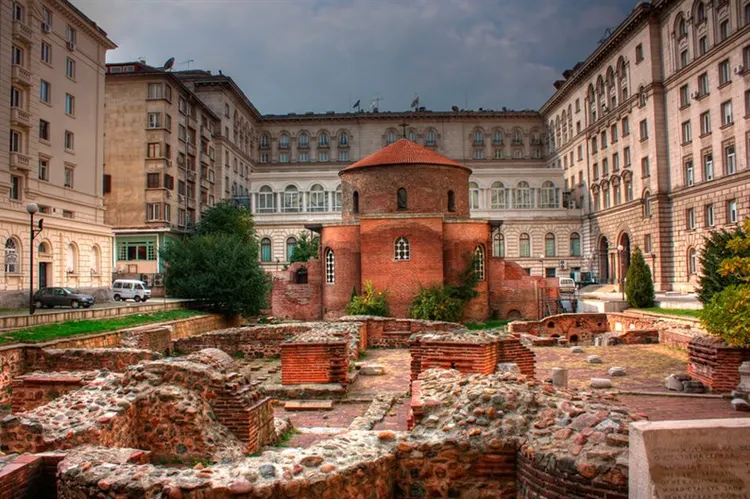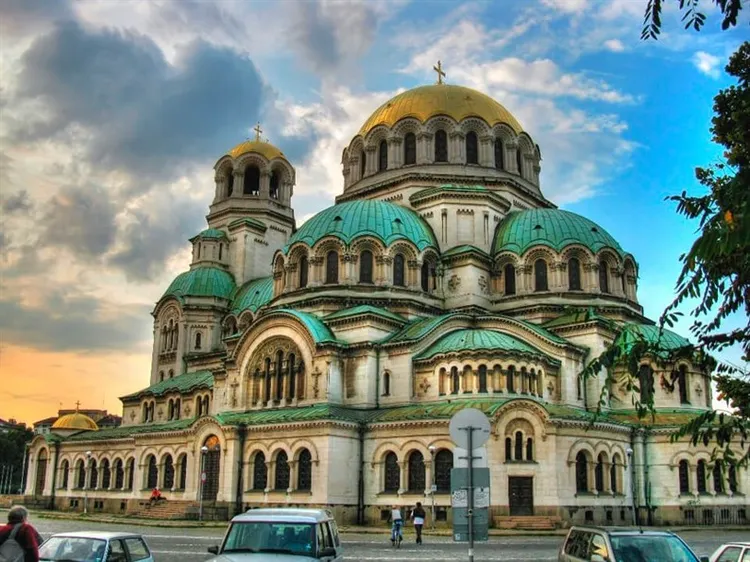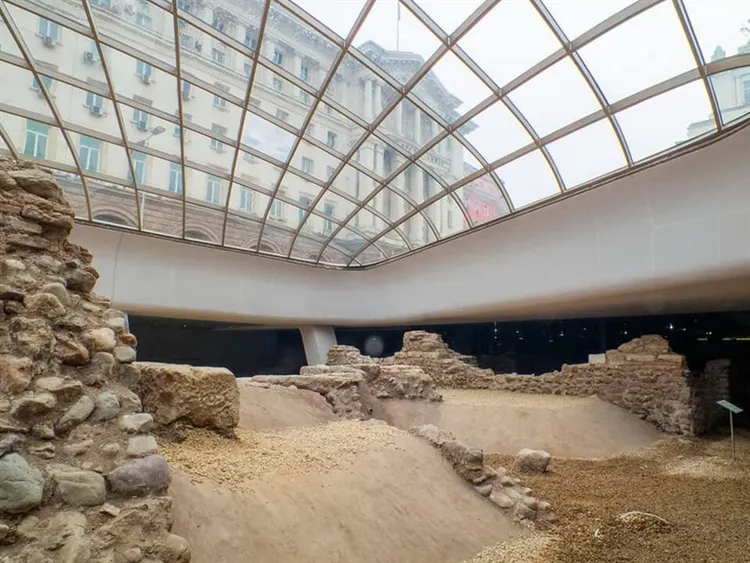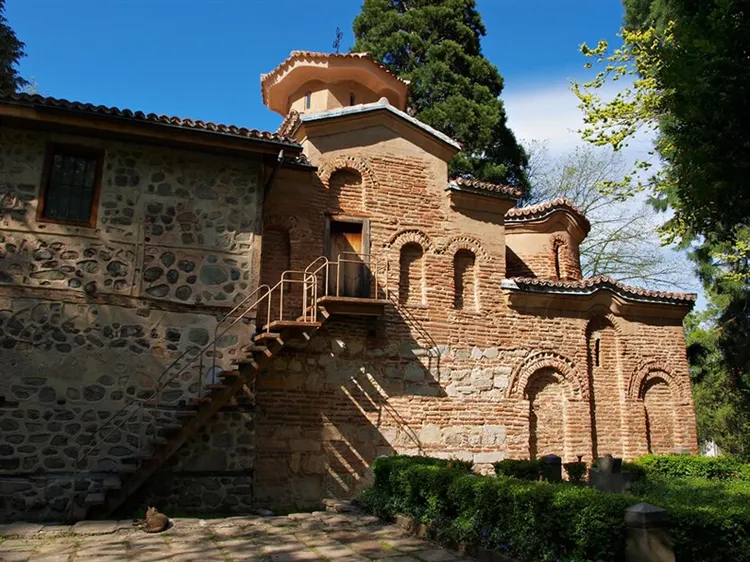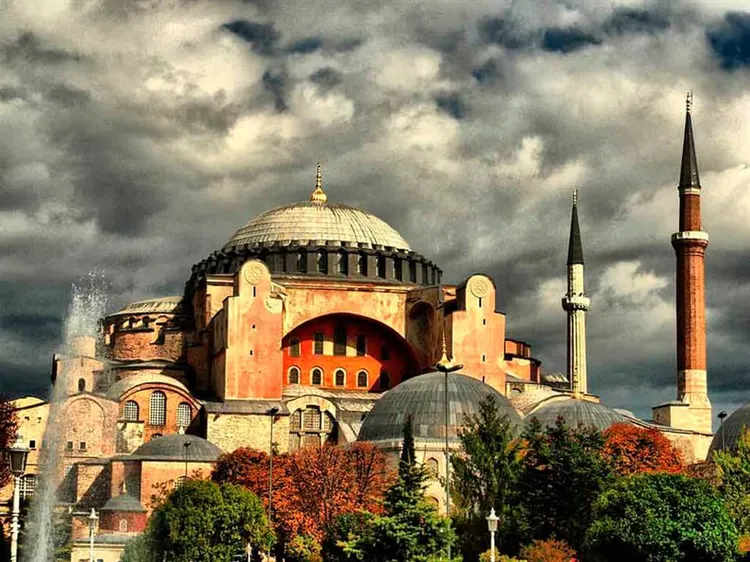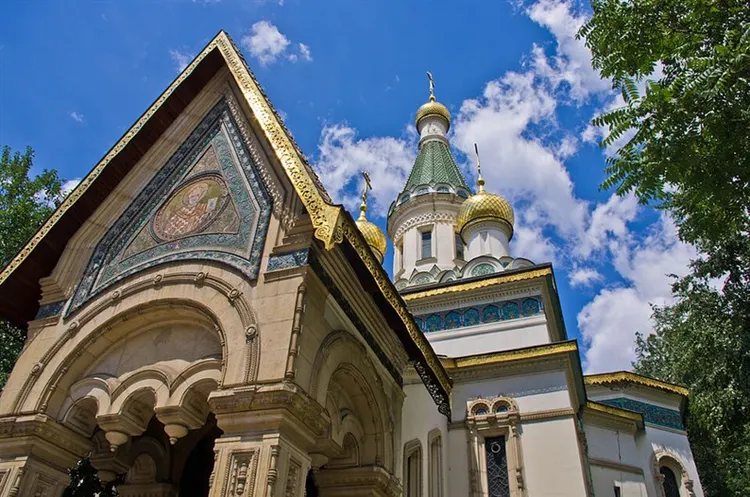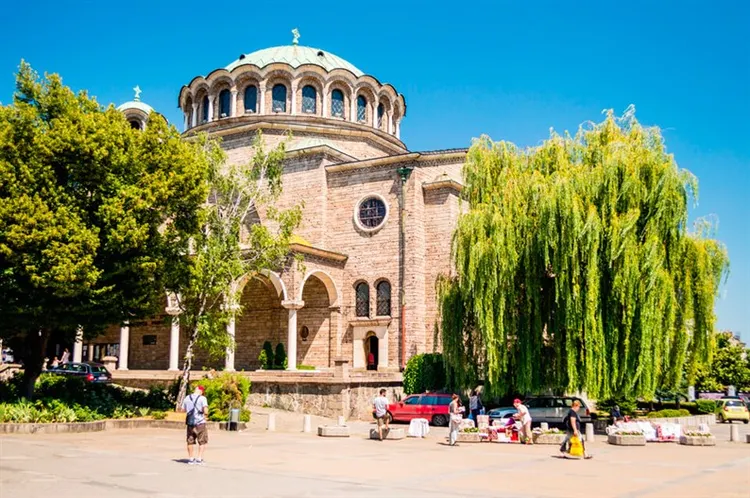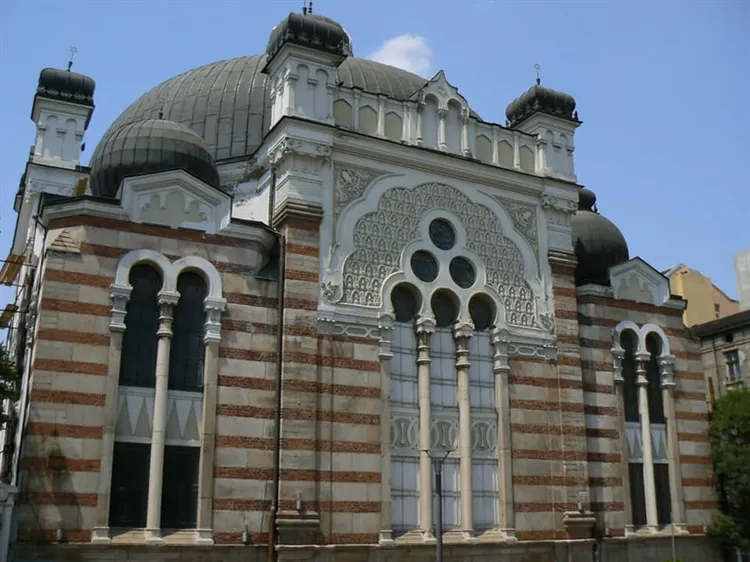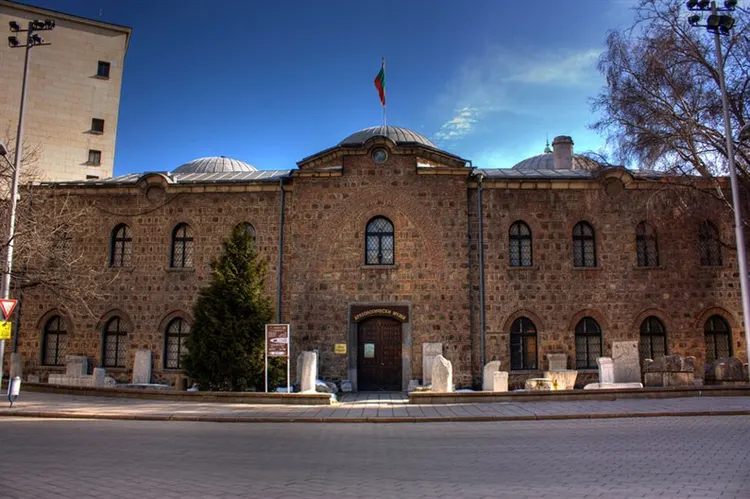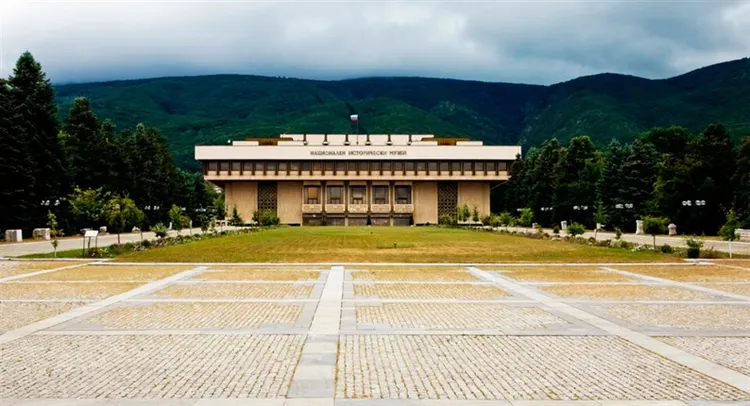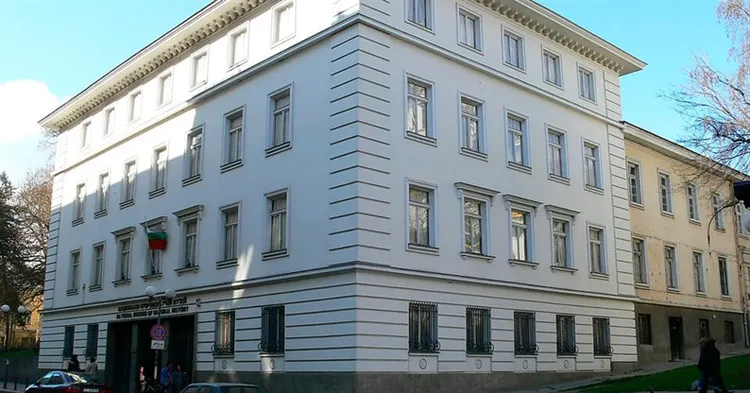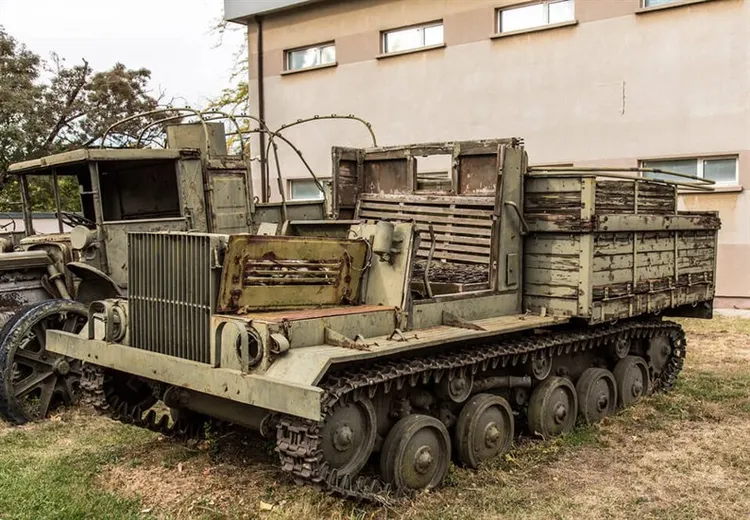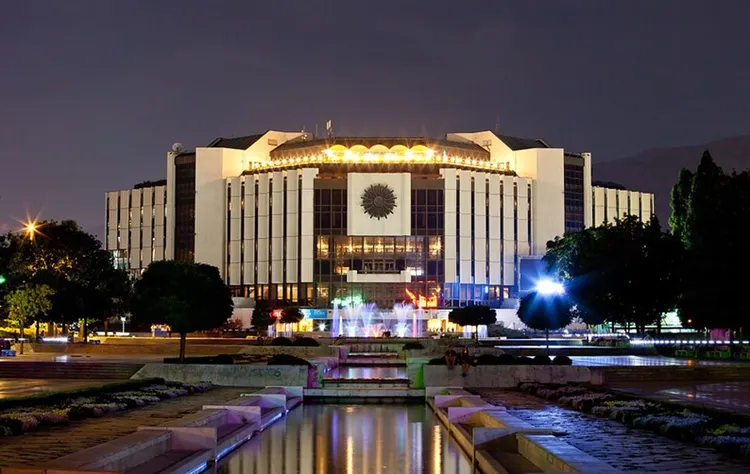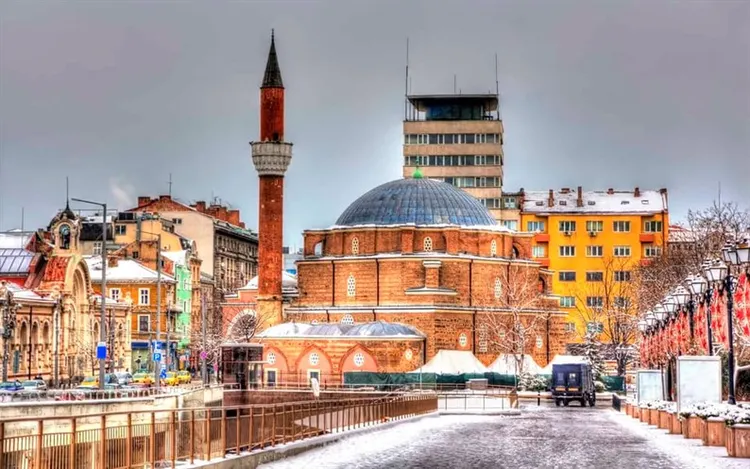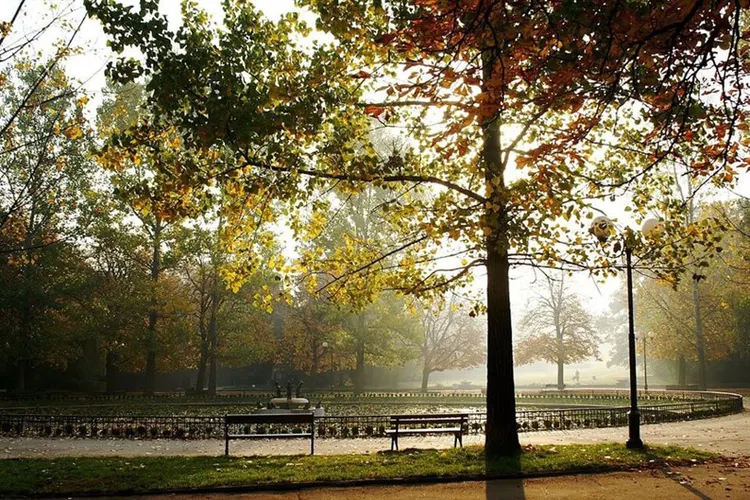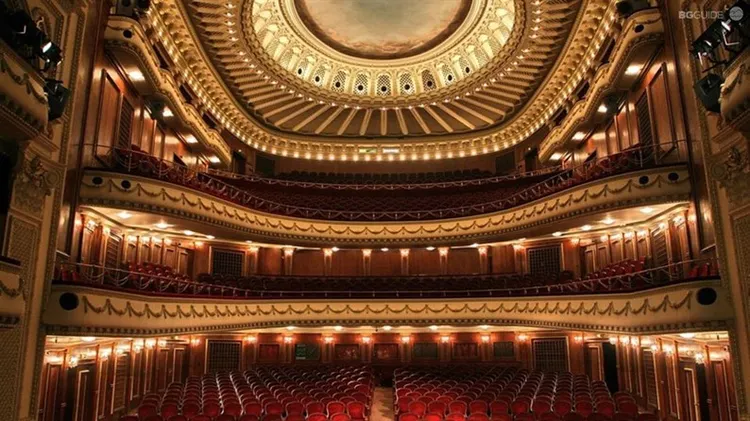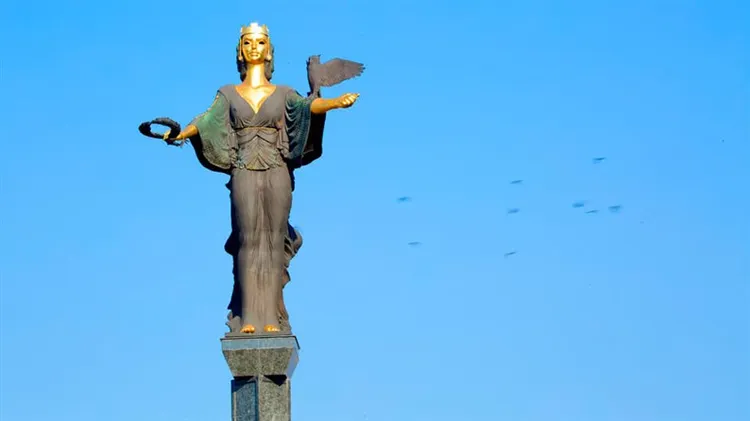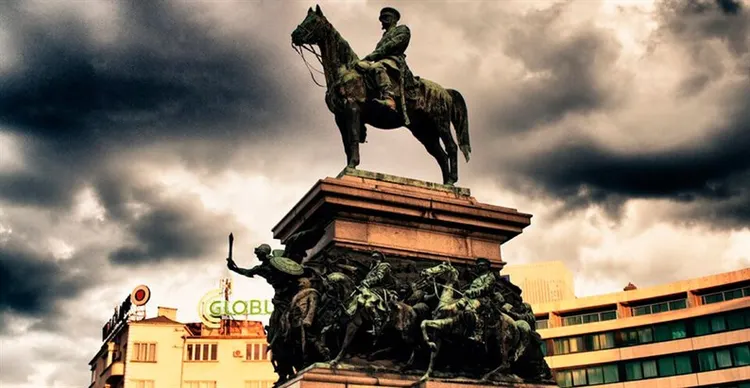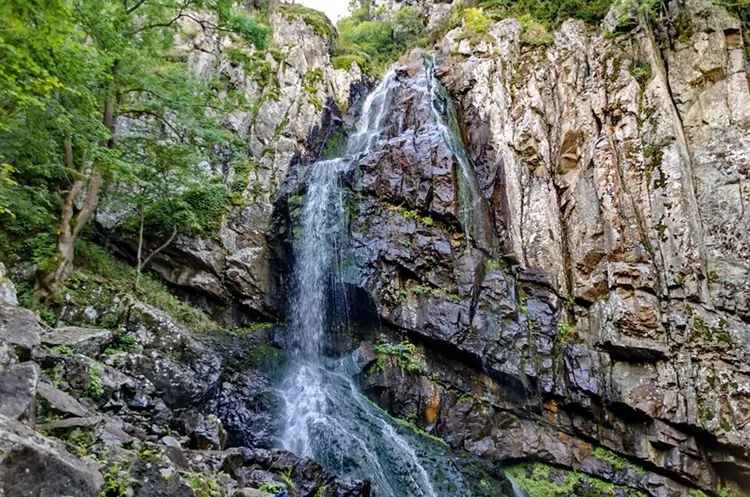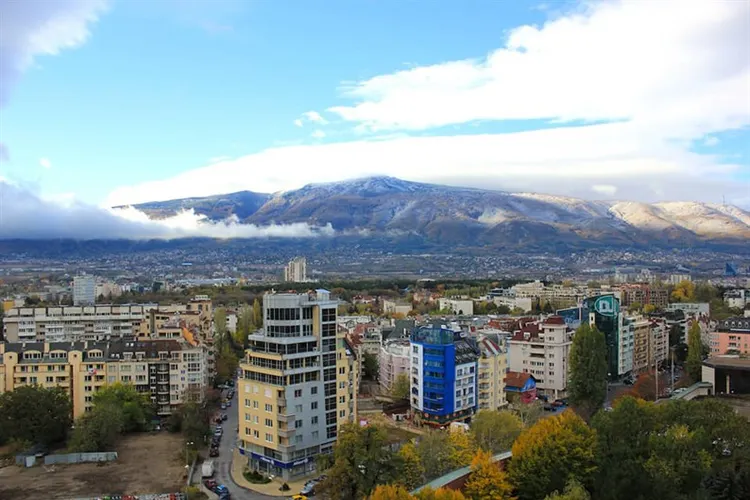Sofia attractions – TOP-20 places, photo, description, map, what to see in Sofia
The capital of Bulgaria is rich in memorable places, museums, churches, which together are the national treasure of the Bulgarians, a symbol of their ethnic identity. Most cultural centers are located compactly, within walking distance from each other. Some sights of Sofia remained outside the boundaries of the modern city – within the medieval defensive walls, but regular transport links have been established to them. The National Cultural Park (the ancient “detinets” of the city) is deliberately not built up, because, together with the unique surrounding nature, ancient churches, museums and forts make up a single historical and cultural landscape. Let's talk about the most important sights of Sofia.
Rotunda of St. George
Like careful hands, two wings of the monumental building of the Presidential Palace surround the former baptistery of Constantine the Great. In the 4th century, the baptistery font cleansed the ancient Bulgarians before adopting the Orthodox faith, so “Light the Place” is among other symbols of the Bulgarian statehood: the guard of honor, the Sheraton-Sofia-Balkan hotel, near the National Archaeological Museum. The shrine is tiny, the height of the dome is 13.7 m. But for a baptistery, such dimensions are too large.
One can imagine the scale of the buildings that surrounded the preserved rotunda on all sides during the heyday of the Byzantine Empire! The Turks, having destroyed the city in the 14th century, founded the Gul-Jamasy mosque, whitewashing the Christian frescoes. The first restoration in 1915 made it possible to rediscover the world of rotunda frescoes. Services are held daily. Rotunda accepts tourists in a pious form (shorts, tops do not pass) from 11 am to 5 pm. Morning prayer begins at 8 am, evening prayer ends at 6 pm Voluntary donations are welcome.
Temple-monument of Alexander Nevsky
From the highest place in Sofia, with twenty-seven bells, the main temple of Bulgaria calls to worship. The construction of a symbol of the victory of Orthodoxy was planned immediately after the Russian-Turkish war in 1979. The first drawings were made by the Russian architect A. Pomerantsev. Construction was carried out for 8 years, ended in 1912. The results of the First World War almost emasculated the essence of the monument: for some time the temple bore the name of St. St. Cyril and Methodius. But after the referendum of 1924, the main altar was re-consecrated in honor of Alexander Nevsky.
The height of the bell tower is 53 m, the area of the cathedral is 3170 m². It accommodates 5,000 worshipers. 82 icons, 273 frescoes of the temple were created by artists P. Myasoedov, V. Vasnetsov, A. Vakhrameev, A. Kiselev, A. Korin, N. Bruni, V. Bolotnov, Kh. Tachev and others. ” with excursion service (for 10 levs per person) from 10.00 to 17.00, except Tuesdays. The cathedral itself is open from 07.00 to 18.00, admission is free.
Serdika Amphitheater
It is located in the museum “Serdika-Sredets Fortress”. The multi-layered citadel of the ancient Greek city of Serdika is presented in an ultramodern exhibition complex – under glass domes and in the form of mothballed fragments of walls, ancient cobbled streets. The most valuable exhibits are the foundations of the fortress from the pink plinth of the Byzantine period and the masonry with multi-colored cobblestones, marble granite blocks of the Hellenic period, as well as the remains of Greek colonnades and colorful archaic wall paintings.
The museum began its existence in 2004, when the area was being cleared for the Arena Hotel. Then an amphitheater was discovered, comparable in size to the Colosseum. All preserved exhibits of the Serdika Arena are included in the halls and decoration of the hotel, therefore they are constantly available.
Boyana Church
Boyana Church is located 8 km from Sofia. It could have been lost among the later additions, if not for the frescoes of the 11th-13th centuries. 240 figures and 89 stories are dedicated to the life and deeds of St. Nicholas the Wonderworker and Panteleimon the Healer. The figures are original: not according to the canon, they amaze with the portrait resemblance of historical characters, conveyed with emotions frozen in facial expressions. The realistic image of vegetables and fruits is interesting (on the fresco “The Last Supper”).
The main part of the 11th century was completed in the 13th century by the sevastokrator Kaloyan. New paintings were applied on top of the previous paint layer. Outside, the facades of the Kaloyanova Church are decorated with ceramics. The two-storied Kaloyanov Church is the tomb of the Bulgarian boyars. In the 19th century, the church was once again completed. The three limits of Bojana are located on the ring of the medieval defensive wall of Sofia. Entrance fee – 5 euros. Open daily from 9.30 am to 5 pm.
Saint Sophie Cathedral
The temple of the wisest in the wise city – there is no tautology – was erected in 343 for the Serdiki Cathedral. 537 left a disastrous mark. After the invasion of the barbarians, the Basilica of the Wisdom of God was restored by Emperor Justinian I the Great as a place for meetings of the episcopate. From the 13th century, the Bulgarian kings began to name the capital city, using the word Sofia instead of the former name of Serdika. At the end of the 19th century, the Ottomans used the building as a warehouse for fire supervision, after the earthquake of 1858 they did not dare to use it for a mosque, as before. A bad omen, they said. But 1878 put everything in its place – Russian victories returned lands, churches and Faith to the Balkans.
The earthquake destroyed the mosaic floors of the oldest functioning Orthodox church on the planet. However, the restorers of the 90s consolidated the sacredness of the place by placing the tomb of the Unknown Soldier with the Flame of Memory, the Stone Lion to the glory of Tsar Boris III, a monument to the writer Ivan Vazov and the square of the Russian Red Cross near Sofia. Moreover, an underground necropolis with galleries and crypts was discovered under the basilica. Entrance there – 6 lv. From April 15 to October 1 (in summer) open from 9.00 to 19.00. In winter – from 9.00 to 17.00.
Russian Church of St. Nicholas
The Church of St. Nicholas the Miracle Worker of Mirlikiy is located on Tsar Liberator Boulevard in the center of Sofia. It was built as a symbol of victory over the Turks on the site of a market mosque. Approaching the church, the visitor walks along the Metochion of the Russian Orthodox Church Abroad, 1400 m2 each, transferred to the Russian Synod back in 1882. The temple was founded in September 1907. The project was led by the architect M. T. Preobrazhensky.
He gave the building a “pseudo-Russian” style, using the techniques of wooden and stone architecture before the time of Peter the Great. Made of white carved stone under a green tiled roof, the porch seems to welcome the face of the Wonderworker, laid out on the pediment of bright majolica. Entrance to the current temple is free, consistent with the hours of worship: at 9 o'clock – liturgy, at 10, 10:30 and 11 – prayers, at 17 o'clock – akathestos. It is necessary to strictly observe the noble appearance. Donations are voluntary.
Holy Week Cathedral
The Church of the Light Nedelya (Bulgarian) is named after the Holy Great Martyr Kyriakia of Nicomedia, called Holy Week in the Balkans. For a long time the temple was wooden. Founded at the turn of the first and second millennium. It is significant in that it served as the tomb of the Serbian king Stephen II Milutin (since the 1460s). Before the fire of 1856, the temple was called the Church of the Holy King.
From 1856 to 1867 a new building was erected on the site of the burnt one. The dimensions of the building are impressive: 35.5 m x 19 m. The complex contains a bell tower for 8 bells (3 were added later). The final appearance of the church was formed by 1898, but the frescoes inside were completed only in 1971-1973. The temple has the status of a Cathedral. Sunday service is accompanied by a male choir. You can't shoot for free. Photography fee – 5lv. Opens at 9:00, service ends at 18:00.
Sofia Synagogue
The largest synagogue in Southeastern Europe was built in 1909 under Tsar Ferdinand I. The project was created by the Austrian architect F. Grünager. Style – eclectic: “Viennese Secession” with Moorish (in the arches of the facades). The height of the building is 31 meters, the area is 659 m², the main chandelier weighs 2 tons. The Florentine mosaics on the floors of the halls, the decoration with exquisite wooden carvings, have been preserved. Thematic excursions “Jewish communities in Bulgaria“, “The Holocaust and the salvation of the Jews” are held here. The synagogue is open every day, except Saturday and Sunday, and not on holidays – the days of Hanukkah and Easter are excluded. Open from 09:00 to 13:30 and from 14:00 to 16:30. Visitors pay BGN 2 for a ticket.
Archaeological Institute and Museum
Museum NAIM BAN (National Archaeological Institute-Museum of the Bulgarian Academy of Sciences) occupies the building of the former Buyuk-dzhamiya mosque, built in 1474. It is the main research center in Bulgaria in the field of ethnography, archeology, material values and book printing. It has been operating since 1949. The presented expositions tell about the pre-Thracian tribes, the Etruscans, funeral masks made of gold and copper of the Thracian kings, as well as artifacts from the time of the rule of Ancient Rome.
Visitors can get acquainted with the results of excavations at the site of the first Odryz capital, Philipoppol, from the foot of Mount Shipka, from the sites of the ancient Bulgarian capitals of Plovdiv and Veliko Tarnovo. The heyday of Byzantium is shown by fragments of mosaics from Istanbul, ceramic dishes and cult objects made of precious metals.
Opening hours – from 10:00 to 18:00, seven days a week. Entrance – 10 leva.
Historical Museum of Bulgaria
Since 2000, the main exposition of the National Historical Museum of Bulgaria has been presented in the building of the government residence “Boyana”. The heart of the presentable building are the halls with the Golden Treasure from Panagyurishte (IV-III centuries BC). Gold dishes encrusted with precious stones, weapons, jewelry, armor and furniture – a total of 650 items – became the main asset of the museum. The treasure was found on December 8, 1949.
In summer (April – October) the museum is open from 9.30 to 18:00, in winter (November – March) – from 9:00 to 17:30. Entrance tickets for individual visitors cost 10 levs, for schoolchildren and students – 1 lev. Groups of 25 visitors run every 20 minutes. The one and a half hour sightseeing tour is free. Every last Monday of the month – free admission for everyone. With a museum ticket, you can visit the Boyana Church.
Museum of Natural History
NPM – National Museum of Natural History (Bulgarian) was established in 1889 by Prince Ferdinand. Located in a 4-storey building. On the ground floor, exhibits of inanimate nature are presented, including giant fossils and minerals. The second floor is occupied by an exposition about the natural wealth of the country. An exhibition of stuffed modern mammals can be viewed on the 3rd. The exhibition on the fourth floor recreates scenes from the life of predators in the forests of America and Asia.
Two dioramas are presented: “Black Sea ichthyofauna” and “Coral reef of the island of Cuba“. The museum operates under the auspices of the Bulgarian Academy of Sciences and is the largest collection of its kind in the Balkans. NPM accepts from Monday to Sunday 10:00 – 18:00, except weekends and holidays. The last launch is at 17:00. Ticket price: adults – 5 levs, children under five years old – 1 levs, pensioners – 2 levs.
Museum of Military History
The National Museum of Military History is part of the structure of the Ministry of Defense of Bulgaria, it has indoor areas – 5 thousand m², in the open air the exposition occupies 40 thousand m². One of the 3 very first museums – created in 1916. Artillery guns, rockets, tanks, planes are presented.
The museum galleries contain collections of weapons of Prince Alexander I of Battenberg (1879-1886), Prince Ferdinand I (1887-1918) and Tsar Boris III (1918-1943), as well as showcases of awards, distinctions, banners and military uniforms. Opening hours: from 10 to 18 hours on all days from Wednesday to Sunday. Admission fee: children under 7 years old – free of charge. Students and pensioners – BGN 2
National Palace of Culture
The palace, recognized as the best in the world (2005 – nomination “Best Congress Center”), occupies a huge area: 15 thousand square meters. It housed 15 halls and 50 other premises, including restaurants, auctions, exhibition galleries. Hall One hosted Herbert von Karajan, José Carreras, Ricardo Mutti, Yuri Bashmet, Emir Kusturica, Montserrat Caballe and others.
The National Palace of Culture can accommodate 8 thousand people at the same time. Metal-plastic was used in the halls and exterior decoration, the interiors are richly decorated with molding, wood carving, tapestries, wall paintings and sculptures. Luxurious park area overlooking the Vitosha Mountain attracts holidaymakers day and night. It is cool in the night cafe tents, thanks to light and music fountains.
Banya-Bashi Mosque
One of the oldest mosques in Europe, the main religious building of the Sofia Muslims. Built at the end of the 16th century over the outlet of thermal waters in the center of Sofia (the word “bath” is translated as a font). The pool for ablutions in the courtyard is in good condition, soaring so far. Otherwise, Banya-Bashi is a classical mosque: a lead dome covers a square building, with a minaret-tower and six small domes along the walls adjacent to the left and right of the minaret.
The main hall is decorated with colorful tiles and suras from the Koran. They are written in gilded script on a turquoise background. Accommodates 700 worshipers. The second floor is for women. Namaz (prayers) are performed many times, starting with the dawn, ending at midnight. Shoes are removed before entering. Tourists are offered bathrobes. Donations are free.
Borisova Gradina Park
30 hectares of green spaces, flower beds and lawns with Lake Maria Luiza in the center are the fruit of the imagination and painstaking work of Bulgarian and invited gardeners. Created in 1894. Includes two main alleys, cycle track, tennis courts, boat station and horse rental.
The style is English, but Japanese motifs are also used in the park. There is a pond overgrown with lotuses, a rose garden with 1500 varieties of roses. Tsar Boris Park is a favorite vacation spot for citizens. Several cafes offer delicious food, so you can go for the whole day. Free admission.
Bulgarian National Opera and Ballet Theater
Established in 1890, the opera troupe became a full-fledged theater in the 1920s with a repertoire consisting of works by Italian, Czech and Russian composers. The abbreviated name is the Sofia Opera. The Pagliacci by Leonkavalo, the first Bulgarian operatic works: The Beggar Woman by Emanuil Manolov, Alexander by Georgiy Atanasov, Tahir Begovitsa by Kizi Khadzhigeorgiev are enjoying success.
The heyday of the ballet school in Bulgaria began with Andrey Petrov's production of Kopelia (1928). The successful ensemble of the choir, orchestra, set designers, costume designers and dancers of the National Opera and Ballet Theater of Bulgaria makes it possible to stage productions of any level. The theater often tours and receives guests. The pompous theater building with 948 seats (in the main hall) was commissioned in 1953. Entrance to the evening performance at 19 o'clock – from 15 levs, to the daytime performance for children (at 10 or 11 o'clock) – from 10 levs.
Statue of Hagia Sophia
A 26-meter statue erected between an Orthodox church, a synagogue and a Catholic church that disappeared from the face of the earth as a result of the Anglo-American bombing, stands on the site of the now non-existent medieval Western Gate. Residents of the capital of Bulgaria revere this place also in memory of the defender of Sofia, tortured by the Ottomans, the bookseller Kiro Geoshev. Address – st. Trapezitsa, 4-a.
The gilded monument is dedicated to the city, an independent path of development and is not a statue of St. Sophia, which the author, sculptor Georgy Chepkenov, has repeatedly paid attention to. The gaze is fixed on the Palace of the National Assembly. The head is crowned with the crown of the ancient Greek fate of the Night, and a wise owl takes off from the hand. Until 1991, the place was occupied by a monument to Lenin, demolished as a result of “decommunization”.
Monument to the Tsar Liberator
The equestrian statue of the Russian Tsar Alexander II stands on a granite pedestal. Made in bronze – as a tribute to the gratitude of the Bulgarians for the overthrow of the Turkish yoke in 1878. The bronze wreath in front of the monument is a gift from Romania. The opening of the monument took place in the presence of Prince Ferdinand I and the son of Alexander II – Grand Duke Vladimir Alexandrovich Romanov on August 30, 1907.
The statue and the multi-figured massive cornice were cast under the direction of the Florentine sculptor Arnoldo Zocchi. This is one of his best works. The height of the monument is 12 m. The statue is placed on the square in front of the Palace of the National Assembly.
Boyana waterfall
A 16-meter column of water jets and splashes is the flight of the Boyana River, falling into the lake of the same name. The waterfall can be seen in the spring from the surrounding area of Sofia, named after the river. Three paths of a 5-kilometer path lead to the miraculous miracle: one is along the riverbed, the other is along the lake, and the third begins at the Boyana Church.
The spectacularly frozen mass of water of the waterfall looks like in winter: it seems to have frozen in the frost on the fly. Glittering stalactites of water are located in close proximity to a small mountain hotel. All three trails run mostly on flat terrain, but at the end the descents are very steep.
Vitosha mountain range
Mount Czerny Vrych (2290 m) is covered with snow until the end of April. Skiers dominate its slopes 150 days a year. 56% of the laid tracks are amateur level. Only 12% are extreme. In summer, hiking begins on the highest mountain and on the two-thousanders lying to it.
Tourist development of the Black Peak began quite recently – in 1895. Over the course of a century, the Vitosha massif has acquired a developed infrastructure: numerous mountain climbing trails and bicycle routes have been blazed, bases and campsites have been built. The funicular lifts from Aleko station (1810 m). For 4 leva, the 30-degree May heat can be changed to the cool atmosphere of alpine meadows. There in the shade – plus 10 ° C.
In Sofia tourism.com.de recommends the following hotels:
